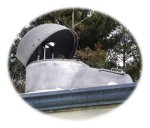 The Hale spectrohelioscope, installed in 1934, was donated by Miss Elizabeth Phoebe Whiting in memory of her sister, Professor Sarah Frances Whiting (1846-1927), first Director of the Whitin Observatory. The spectrohelioscope is used each semester by students in the Department's introductory astronomy subjects.
The Hale spectrohelioscope, installed in 1934, was donated by Miss Elizabeth Phoebe Whiting in memory of her sister, Professor Sarah Frances Whiting (1846-1927), first Director of the Whitin Observatory. The spectrohelioscope is used each semester by students in the Department's introductory astronomy subjects.
The spectrohelioscope is a fixed vertical refracting telescope, dedicated to examining the Sun's spectrum. The objective lens was made by Carl Lundin, and is five inches in diameter with a focal length of 18 feet. It's located inside the brass tube in the Whitin library just below the ceiling.
The schematic diagram below shows how the spectrohelioscope works. Sunlight is directed into the vertical telescope by a heliostat; that is, a flat mirror that tracks the Sun as it moves across the sky. The heliostat is housed in a small aluminum dome on the roof. The heliostat mirror is elliptical, 5 inches wide by 8 inches long.
Sunlight from the telescope is fed, through its vertical brass tube, into a high-resolution spectroscope in the basement. The light passes through a narrow slit, then to a curved mirror that produces a collimated beam which is neither converging to a focus nor spreading apart. This light then hits a diffraction grating that disperses the light into a spectrum. The spectrum may be viewed through a small telescope on a pivoting mount. The image below the schematic shows a small portion of the solar spectrum, revealing very many absorption lines.

Alternatively, a flat mirror mounted inside the brass tube at the ground-floor level can be tilted into the path of the light beam, to project an image of the Sun into the library for study there.

